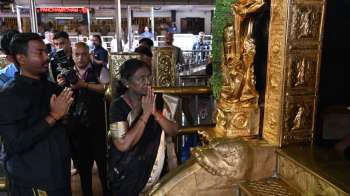Diwali 2025: Toxic Afterglow As Firecrackers Push AQI Beyond 900 In Delhi; Mumbai, Chennai, Hyderabad Also Choke On Polluted Air

A joyous Diwali has been marred by the pall of hazardous pollutants that enveloped several cities the morning after, sending the Air Quality Index (AQI) soaring to hazardous levels.
The National Capital Region, which got the Supreme Court’s nod to use ‘green’ firecrackers just ahead of the festival, appears to be the hardest hit among big cities, with a peak AQI of over 900 on the Central Pollution Control Board (CPCB) dashboard, and twice that level going by other monitoring agencies’ data.
Many other cities fared only marginally better, with Mumbai recording 439 at 10 pm and remaining in the severe category later; Chennai hit 448 at 7 pm, Hyderabad 414 and Bengaluru 369, when a safe AQI stands at less than 50. In a country where people breathe air laced with particulate matter that is on average 10 times higher than World Health Organisation (WHO) norms, this crisis is significantly cutting healthy life years and longevity as a whole.
Those with compromised lung function and living with debilitating conditions, such as chronic obstructive pulmonary disease, face a potential death sentence each year.
Researchers who studied Indian urban mortality data over a full decade from 2008 argued in the journal Lancet Planetary Health last year that even short-term exposure to every 10 micrograms per cubic metre increase in fine particulate matter of 2.5 micrometres (PM2.5) significantly raised the risk of death. If a stricter pollution limit than what was followed by India was applied, daily pollution-linked deaths rose even more.
Evidence is mounting that air pollution, especially in poorly planned and administered cities, is caused by distinct factors, such as growing vehicle populations, construction and demolition, road dust and industries, adding to seasonal activities such as stubble burning in the north and the Diwali peak.
The Supreme Court earlier tried to end Diwali firecracker pollution through a ban on sale and use in the National Capital Region, but this proved to be largely unenforceable, with residents simply buying from neighbouring states. This year’s relaxation given by the top court for the sale of certified ‘green’ or less polluting varieties and their use restricted to a total of three hours on two days proved equally ineffective.
Unfortunately, curbs on firecracker use have become politicised as a denial of religious rights. But massive pollution aggravated by firecrackers clearly points to the balance of convenience favouring effective restrictions. The original petition on behalf of a group of child petitioners, who sought to assert their right to healthy lives, suggested community-led fireworks celebrations that would avoid unrestrained and competitive individual shows.
This remains a worthwhile idea. It is imperative to also address stubble burning pollution with utmost seriousness by the concerned states. Equally, the courts must curb other sources of air pollution, such as profligate vehicle use in cities with no regard to environmental costs.









